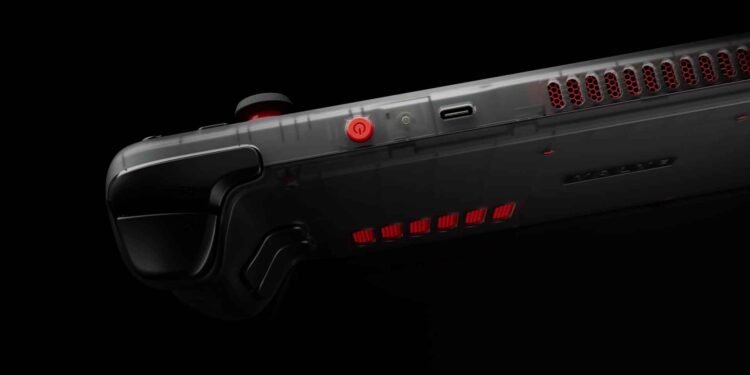The handheld gaming scene exploded with the release of the Steam Deck, and the market now features a variety of other handheld devices. However, the Steam Deck remains the most popular, not because it’s the most powerful, but because it promises seamless access to your entire Steam library on the go. So that being said, if you’re in the market for a Steam Deck but are unsure whether to choose the 512GB or 1TB version, this guide will help you make an informed decision. Read on as we break down the pros and cons of each model so that you can make the right purchase!
Although the difference between these two variants might appear to be just about storage capacity, there’s actually a lot more to consider. Beyond storage, there are several other factors and subtle differences that could impact your overall experience with each device. So to make it easy for you, we’ve gathered all the essential details about both models, so you know exactly what you’re getting.
Steam deck Oled 512 vs 1TB: Which to buy?
Based on the spec sheet provided for the Steam Deck OLED 512GB and 1TB versions, let’s break down the pros and cons of each and conclude with a recommendation on which one might be the best fit for you.
Steam Deck OLED 512GB: Pros and Cons
Pros
- Affordability: Priced at $549, the 512GB model is $100 cheaper than the 1TB version, making it a more budget-friendly option.
- Adequate Storage for Casual Gamers: With 512GB of NVMe SSD storage, this version offers sufficient space for a good number of games, especially if you prefer smaller indie titles or are comfortable managing your library by occasionally deleting and reinstalling games.
- Same Core Features: You get the same 1280 x 800 HDR OLED display, 7.4″ diagonal display size, and up to 90Hz refresh rate as the 1TB model.
- Lightweight and Portable: The 512GB version does not include the premium anti-glare etched glass, which could make it slightly lighter and more portable.
Cons:
- No Premium Anti-Glare Glass: Unlike the 1TB model, the 512GB version lacks the premium anti-glare etched glass. This could lead to more screen reflections, especially in bright environments, affecting visibility and overall gaming experience.
- Less Storage: For gamers who play large AAA titles or prefer having a vast library of games readily available, 512GB might feel restrictive. You may need to rely on external storage options like a microSD card, which could impact performance compared to the internal NVMe SSD.
- No Exclusive Extras: The 512GB model does not include the exclusive startup movie or virtual keyboard theme, which are minor perks but might appeal to those who like customization and unique features.
Steam Deck OLED 1TB: Pros and Cons
Pros
- Ample Storage: The 1TB NVMe SSD provides ample space for a large library of games, including multiple AAA titles. This is for gamers who dislike constantly managing storage or rely heavily on having games installed for quick access.
- Premium Anti-Glare Glass: The inclusion of premium anti-glare etched glass is a significant upgrade, especially if you often game in brightly lit environments. It reduces reflections and glare, improves visibility, and makes the gaming experience more enjoyable.
- Exclusive Features: The 1TB model comes with an exclusive startup movie and a virtual keyboard theme, letting you personalize things a bit.
- Enhanced Carrying Case: The 1TB version includes a carrying case with a removable liner, providing additional customization and protection options. T
- Future-Proofing: With double the storage, the 1TB model is more future-proof, accommodating larger game files as they continue to grow in size.
Cons
- Higher Price: At $649, the 1TB model is $100 more expensive than the 512GB version. This price difference may not be justifiable for everyone, especially if you don’t need the extra storage or premium features.
- Marginal Weight Increase: The inclusion of premium anti-glare glass might make the 1TB model slightly heavier, which could impact comfort during extended gaming sessions, though the difference is likely minimal.
Which to Buy?
Choose the Steam Deck OLED 512GB if:
- You’re on a tighter budget and want to experience the Steam Deck without spending extra for features you may not need.
- You’re okay with managing your game library and don’t require a massive amount of storage.
- You don’t mind the lack of premium anti-glare glass and exclusive features.
On the other hand, you can choose the Steam Deck OLED 1TB if:
- You need ample storage and prefer to have a large library of games installed at all times.
- You value the premium anti-glare glass and expect to play in various lighting conditions where reflections might be an issue.
- You’re interested in the exclusive features and want the most complete Steam Deck experience available.
In summary, the 512GB model is an excellent choice for budget-conscious gamers who are fine with moderate storage and standard features. On the other hand, the 1TB version is ideal for those who prioritize storage, display quality, and additional exclusive perks, making it the better option for power users and those looking to future-proof their purchases. That should clear up your doubts about which device to purchase. Now, for all your other gaming-related queries, make sure to visit DigiStatement first. Read more: Steam Deck CSS Loader Not Working: How to fix it?


